| Listing 1 - 10 of 11 | << page >> |
Sort by
|
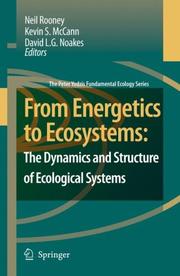
ISBN: 9781402053368 1402053363 Year: 2007 Publisher: Dordrecht: Springer,
Abstract | Keywords | Export | Availability | Bookmark
 Loading...
Loading...Choose an application
- Reference Manager
- EndNote
- RefWorks (Direct export to RefWorks)
Book
ISBN: 9780387886077 9780387893662 0387886079 Year: 2009 Publisher: New York Springer
Abstract | Keywords | Export | Availability | Bookmark
 Loading...
Loading...Choose an application
- Reference Manager
- EndNote
- RefWorks (Direct export to RefWorks)
Lipids in Aquatic Ecosystems provides a comprehensive summary of the most recent literature on the role of lipids in aquatic systems from many world experts. Essential fatty acids (EFAs), or omega-3 and omega-6 fatty acids as they are known in the popular press, have garnered considerable attention in the technical and popular literature during the last decade. Lipids are important energy storage molecules in most organisms. However, equally or even more important, specific lipids (e.g. EFAs) play critical roles in a wide range of physiological processes such as regulating the structural properties of cell membranes and serving as precursors to eicosanoid signaling molecules (i.e. prostaglandins, prostacyclins, the thromboxanes and the leukotrienes). It is well established the EFAs have important impacts on human health, and it is widely agreed that the classic "Western diet" is particularly imbalanced vis-à-vis foods containing omega-3 versus omega-6 fatty acids. But beyond the specialist literature, it is not widely known that the most physiologically important long chain, polyunsaturated omega-3 fatty acids, i.e. eicosapentaenoic acid (EPA) and docosahexaenoic acid (DHA) are produced de novo principally by aquatic algae. Furthermore, within aquatic ecosystems these molecules may be synthesized from precursor fatty acid molecules and/or concentrated as they are conveyed to animals consumed by humans. For example, in salmonid fish DHA and EPA constitute ~40% of total fatty acids, whereas in typical marine and freshwater phytoplankton EPA and DHA account for between 2% and 20% of total fatty acids. In humans, EPA and DHA play key roles in heart health, immune and inflammatory responses, visual acuity as well being major components of neurological tissues such as the brain and spinal cord. This realization has prompted great concern in the fisheries management community that the world's natural supply of EPA and DHA is being overexploited. There is also concern that global climate change and/or eutrophication processes may be modifying the production and availability of these molecules in aquatic ecosystems. Tremendous strides, as summarized in this book, have been made in our understanding of the specific enzymatic pathways by which various lipids are synthesized by producers and transformed by consumers within aquatic ecosystems. Recent research also indicates that in addition to EFAs, phyto-sterol lipids may play critical roles in the nutritional physiology aquatic fauna. This book also has state-of-the-art chapters on the utility of fatty acids are biomarkers of material and energy transfer in aquatic ecosystems. Primary producers at the base of aquatic food webs generally have distinctive fatty acid profiles and many studies have shown that these fatty acid "signatures" can be used as tracers of food web dynamics. Lipids also play important roles in the trophic transfer of a variety of lipid-soluble persistent organic pollutants, and selectively accumulate even with non-lipid soluble contaminants such as the powerful neurotoxin methyl mercury. Certain fatty acids may also serve as the substrates from which some toxins and allelopathic metabolites are produced. This book will be of interest to a wide range of scientists from the fields of marine and freshwater plankton ecology, algal physiology, fisheries management, nutritional science, food web ecology, aquaculture, toxicology, and environmental science. Michael T. Arts is a research scientist with Environment Canada at the National Water Research Institute in Burlington, Ontario, Canada. Michael T. Brett is a professor in the Department of Civil and Environmental Engineering at the University of Washington in Seattle. Martin J. Kainz is a research scientist at the WasserCluster - Biologische Station Lunz; an inter-university center dedicated to freshwater sciences research and education, in Lunz am See, Austria.
Aquatic ecology --- Lipids --- Food chains (Ecology) --- Aquatic ecology. --- Food chains (Ecology). --- Lipids.
Book
ISBN: 0387511296 3540511296 3642837867 3642837840 9780387511290 9783642837869 Year: 1990 Volume: 20 Publisher: Berlin : Springer,
Abstract | Keywords | Export | Availability | Bookmark
 Loading...
Loading...Choose an application
- Reference Manager
- EndNote
- RefWorks (Direct export to RefWorks)
Food chains (Ecology) --- Mathematical models --- Ecology --- Food supply --- Mathematics. --- Models --- Mathematical models. --- theoretical --- Issue --- Ecology. --- Food supply. --- theoretical. --- Theoretical. --- Food chains (Ecology) - Mathematical models
Book
ISBN: 041223100X 0412231107 9400959273 9400959257 9780412231100 Year: 1982 Publisher: London,New York : Chapman and Hall,
Abstract | Keywords | Export | Availability | Bookmark
 Loading...
Loading...Choose an application
- Reference Manager
- EndNote
- RefWorks (Direct export to RefWorks)
General ecology and biosociology --- Nutritionary hygiene. Diet --- Food chains (Ecology) --- Biotic communities --- Ecosystèmes --- Ecosystèmes
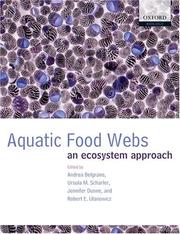
ISBN: 1281190411 0191524069 9786611190415 019856483X 1435620844 9780191524066 9780198564829 0198564821 9780198564836 9780191713828 0191713821 9781435620841 0198564821 Year: 2005 Publisher: Oxford : Oxford University Press,
Abstract | Keywords | Export | Availability | Bookmark
 Loading...
Loading...Choose an application
- Reference Manager
- EndNote
- RefWorks (Direct export to RefWorks)
'Aquatic Food Webs' provides a current synthesis of theoretical and empirical food web research. The textbook is suitable for graduate level students as well as professional researchers in community, ecosystem, and theoretical ecology, in aquatic ecology, and in conservation biology.
Aquatic ecology. --- Food chains (Ecology) --- Food webs (Ecology) --- Trophic ecology --- Animals --- Ecology --- Nutrient cycles --- Aquatic biology --- Food --- Aquatic ecology
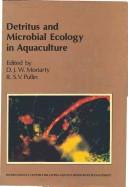
ISBN: 971102229X 9789711022297 Year: 1987 Volume: 387 Publisher: Manila : International Center for Living Aquatic Resources Management,
Abstract | Keywords | Export | Availability | Bookmark
 Loading...
Loading...Choose an application
- Reference Manager
- EndNote
- RefWorks (Direct export to RefWorks)
Aquaculture --- Detritus --- Microbial ecology --- Food chains (Ecology) --- Congresses --- aquaculture --- Écologie microbienne --- microbial ecology --- Déchet agricole --- Agricultural wastes --- Déchet industriel --- Industrial wastes --- Utilisation des déchets --- Waste utilization --- Biomasse --- biomass --- Bacteria --- Algae --- Micro-organisme --- microorganisms --- Valeur nutritive --- Nutritive value --- Pisciculture --- Fish culture --- Toxicité --- toxicity --- Food webs (Ecology) --- Animals --- Biological productivity --- Ecology --- Niche (Ecology) --- Nutrient cycles --- Biogeochemical cycles --- Sediments (Geology) --- Food --- aquaculture. --- Fish culture. --- Trophic ecology --- Aquaculture - Congresses --- Detritus - Congresses --- Microbial ecology - Congresses --- Food chains (Ecology) - Congresses --- Eaux usees --- Iclarm --- Detrital system

ISBN: 2100052322 9782100052325 Year: 2016 Publisher: Paris : Dunod,
Abstract | Keywords | Export | Availability | Bookmark
 Loading...
Loading...Choose an application
- Reference Manager
- EndNote
- RefWorks (Direct export to RefWorks)
L'écologie scientifique est d'abord une science d'observation qui mobilise un grand nombre de disciplines comme la zoologie, la botanique, la géologie, la climatologie, l'hydrogéologie, ... Elle peut être divisée en deux domaines d'étude complémentaires : la biologie des populations et l'écologie des écosystèmes. Cet ouvrage fait la synthèse des connaissances en écologie des écosystèmes. Il est organisé en quatre grandes parties. La première présente les méthodes d'études de la recherche, lesquelles s'appuient sur l'observation, l'expérimentation et la modélisation. Elle est suivie d'une introduction au concept d'écosystème. Les différents thèmes de recherches actuels sont ensuite abordés : hiérarchies écologiques, homogénéité/hétérogénéité, rôle de la diversité biologique, échelles spatiales et temporelles ... Enfin, l'ouvrage se termine par une présentation du fonctionnement global de la biosphère dans une perspective historique. Les notions théoriques sont illustrées par de très nombreux exemples présentés en encarts (certains en anglais, lorsque tirés d'articles originaux qui sont maintenant des références). Ce livre est destiné aux étudiants des seconds cycles (universités et grandes écoles), ainsi qu'aux chercheurs et aux enseignants désirant disposer des concepts modernes de l'écologie des écosystèmes.
Ecology --- Ecologie --- Écologie --- ecology --- Écosystème --- ecosystems --- sciences --- History --- Évolution --- evolution --- Biodiversité --- Biodiversity --- Réserve naturelle --- Nature reserves --- Structure de la population --- population structure --- Population végétale --- plant population --- Cycle biogéochimique --- cycling --- Changement climatique --- Climatic change --- Impact sur l'environnement --- Environmental impact --- Écologie. --- evolution. --- Biotic communities. --- Food chains (Ecology) --- Biodiversity. --- Biosphere. --- Écosystèmes. --- Biosphère. --- Ecology. --- Écosystèmes --- Biosphère
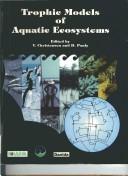
ISBN: 9711022842 9789711022846 Year: 1993 Volume: 26 638 Publisher: Manila : International Center for Living Aquatic Resources Management (ICLARM),
Abstract | Keywords | Export | Availability | Bookmark
 Loading...
Loading...Choose an application
- Reference Manager
- EndNote
- RefWorks (Direct export to RefWorks)
Aquatic ecology --- Food chains (Ecology) --- Écosystème --- ecosystems --- Milieu aquatique --- Aquatic environment --- Modèle --- Models --- Eau douce --- Freshwater --- Milieu pélagique --- Pelagic environment --- 574.5 --- Hydrobiology. Aquatic biocoenoses and ecosystems. Food chains --- 574.5 Hydrobiology. Aquatic biocoenoses and ecosystems. Food chains --- Food webs (Ecology) --- Animals --- Biological productivity --- Ecology --- Niche (Ecology) --- Nutrient cycles --- Aquatic biology --- Food --- Trophic ecology --- Ecopath --- Ecosysteme aquatique --- Modele trophique
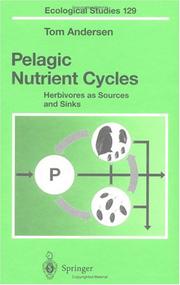
ISBN: 3540618813 3642082793 3662034182 9783540618812 Year: 1997 Volume: 129 Publisher: Berlin : Springer,
Abstract | Keywords | Export | Availability | Bookmark
 Loading...
Loading...Choose an application
- Reference Manager
- EndNote
- RefWorks (Direct export to RefWorks)
While ecology is one of the scientific disiplines that most clearly belongs to ''basic research", it also strives to serve as a predictive tool for management. Outstanding examples of predictive ecology are Vollenweider's models on the relationship between phosphorus load and water renewal time of lakes, and the resulting algal biomass. The needed few and easily accessible input parameters to very simple models provided a direct link from basic ecology to management, and today these models are key tools for managers worldwide to control lake eutrophication and algal blooms. The baseline of this success is the general relation between phosphorus concentration and phytoplankton biomass that is observed for most lakes. While these relationships are most frequently presented in log-log diagrams, the aquatic ecologist who replots these a linear scale may ask himself why, in spite of the overall correlation, there is still such a variability. It is possible to predict levels of algal biomass that may be synthesized at a given phosphorus load. Some lakes apparently offer optimal conditions for their phytoplankton communities, while others may support less than half the biomass at the same phosphorus load. There are limits to growth, however, and the predic tive outcome of phosphorus load decreases as the load increases. This holds in particular for the higher trophic levels like zooplankton and fish. With increased enrichment there are signs of decreased efficiency of energy trans fer between foodweb compartments.
Herbivores --- Nutrient cycles --- Food chains (Ecology) --- Food --- Issue --- Ecology . --- Life sciences. --- Agriculture. --- Geoecology. --- Environmental geology. --- Nature conservation. --- Oceanography. --- Ecology. --- Life Sciences, general. --- Geoecology/Natural Processes. --- Nature Conservation. --- Oceanography, Physical --- Oceanology --- Physical oceanography --- Thalassography --- Earth sciences --- Marine sciences --- Ocean --- Conservation of nature --- Nature --- Nature protection --- Protection of nature --- Conservation of natural resources --- Applied ecology --- Conservation biology --- Endangered ecosystems --- Natural areas --- Geoecology --- Environmental protection --- Physical geology --- Farming --- Husbandry --- Industrial arts --- Life sciences --- Food supply --- Land use, Rural --- Biosciences --- Sciences, Life --- Science --- Balance of nature --- Biology --- Bionomics --- Ecological processes --- Ecological science --- Ecological sciences --- Environment --- Environmental biology --- Oecology --- Environmental sciences --- Population biology --- Conservation --- Ecology --- Nutrient cycles. --- Food webs (Ecology) --- Trophic ecology --- Animals --- Nutrient cycling --- Biogeochemical cycles --- Herbivores - Food --- CYCLING --- LAKES --- NUTRIENTS --- ALGAE --- HERBIVORES --- FOOD CHAINS --- EUTROPHICATION --- BIOGEOCHEMICAL CYCLES --- DYNAMIC MODELS
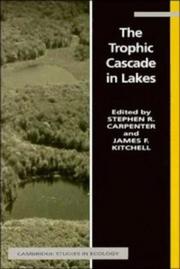
ISBN: 0521566843 052143145X 9780521431453 9780521566841 Year: 1996 Publisher: Cambridge : Cambridge University Press,
Abstract | Keywords | Export | Availability | Bookmark
 Loading...
Loading...Choose an application
- Reference Manager
- EndNote
- RefWorks (Direct export to RefWorks)
Food chains (Ecology) --- Food webs (Ecology) --- Nutrient cycles --- Biological production rate --- Productivity, Biological --- Biological productivity --- Lake ecology --- 556.55 --- 574.4 --- 574.5 --- 575 --- 574.4 Terrestrial biocoenoses and ecosystems. Biogeocoenoses. Biogeochemical cycles. Food chains --- Terrestrial biocoenoses and ecosystems. Biogeocoenoses. Biogeochemical cycles. Food chains --- Animals --- Ecology --- Niche (Ecology) --- Lakes --- Freshwater ecology --- Reservoir ecology --- 574.5 Hydrobiology. Aquatic biocoenoses and ecosystems. Food chains --- Hydrobiology. Aquatic biocoenoses and ecosystems. Food chains --- 575 General genetics. General cytogenetics. Immunogenetics. Evolution. Speciation. Phylogeny --- General genetics. General cytogenetics. Immunogenetics. Evolution. Speciation. Phylogeny --- 556.55 Limnology. Lakes. Reservoirs. Ponds --- Limnology. Lakes. Reservoirs. Ponds --- Food --- Trophic ecology --- Lacustrine ecology --- Lentic ecology --- FRESHWATER ECOLOGY --- PREDATOR PREY RELATIONSHIPS --- ZOOPLANKTON --- LAKES --- POPULATION DYNAMICS --- FOOD CHAINS --- MIGRATION --- ECOSYSTEMS --- MODELS --- Population dynamics
| Listing 1 - 10 of 11 | << page >> |
Sort by
|

 Search
Search Feedback
Feedback About
About Help
Help News
News